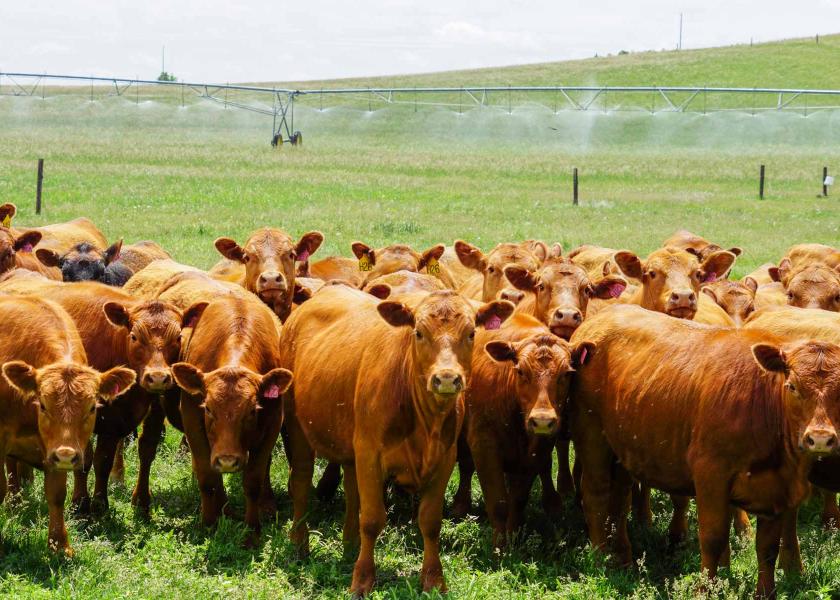If you are like me, your New Year’s Resolution process doesn’t necessarily have a hard deadline of 12:01 am on January 1st. I confess that my New Year’s Resolutions tend to be more New Year’s “ish”…
When it comes to 2023 resolutions for your cow-calf operation, you’ve probably been asking yourself questions as 2022 unfolded that impact your 2023 decision-making. How will my cows winter through what has set up to be a limited forage scenario for many? Is that feed truck going to make it through one more production year? How will those first-calf heifers work out? What will my calving percentage be? How can I increase the value of my future calf crop? How will I manage those calves once they hit the ground? Will I do it differently this year? You ARE asking that question too – right?
Creating economic value is a continuous process. One place to start is to objectively assess the success and failure of your past calf management practices with respect to value creation and plan your calf management strategy for the coming year accordingly. Another is to step back completely and ask, in the words of famous management guru Peter Drucker, “If we weren’t already doing it this way, how would we start?” This one includes a hard look at tradition for the economic value that it adds rather than simply for tradition’s sake.
What’s your optimal value strategy? It is the strategy that best fits your resource base, including labor and management capabilities, facilities, time, knowledge and/or the capacity to add new knowledge, and the ability to handle any upfront costs that facilitate changing your strategy. In short, assess your capabilities, the costs and returns from your current calf management strategy and the predicted costs and returns from a strategy change. An important thing to understand is that your best strategy may look a little different than your neighbor’s because of differences in that resource base.
Don’t forget that part of your strategy should include finding the right market for your calves. You’ve heard me say it before – Market Your Management! The right market will often be the difference between a profitable strategy and an unprofitable one.
Basic calf health management practices on the ranch impact the efficiency and quality of cattle moving through the supply chain and, ultimately, the quality of beef on the consumer’s table. Buyers have incentive to pay premiums for cattle that are more likely to thrive as they move to the next phase of production. Find the market where buyers value – with their wallet – the calf health management strategy that you’ve implemented.
The right market may be your local auction market, a regional auction market, a special sale through a certified program or selling direct to someone further down the supply chain. The best market outlet for your cattle depends on multiple things, but much of it is determined by the attributes that you’ve built into your calves through your management. Who is your target buyer for those attributes and how do you access those buyers?
OSU Fact Sheet AFS-3305 lays out the requirements for Oklahoma Quality Beef Network’s (OQBN) VAC-45 preconditioning program at https://extension.okstate.edu/fact-sheets/oklahoma-quality-beef-network-vac-45-program-requirements.html. Because the list of program requirements represents attributes that, even implemented individually, can add value when it’s time to market your cattle (at the appropriate venue – see above!), this list is a good place to start when considering calf health management strategies, even if you don’t participate in a marketing program. OQBN’s program requirements include:
- Vaccinated with two rounds of a 5-way respiratory vaccine for BVD Type 1 & 2, IBR, PI3, and BRSV
- Vaccinated with two rounds of at least a 7-way clostridial vaccine (a.k.a. Blackleg)
- Vaccinated with one dose of M. haemolytica (a.k.a. shipping fever) vaccine
- Weaned a minimum of 45 days
- Males castrated and healed
- Dehorned and healed
- Bunk trained
- Producer Beef Quality Assurance (BQA) certification
- Raised at the ranch of origin
- OQBN program ear tag identified
- Third party verification by Oklahoma State University Extension personnel
Photo Credit: Middle Creek Farm, Neb. (Hall & Hall)
Source: Kellie Curry Raper – OSU Livestock Marketing Specialist January 20, 2023








